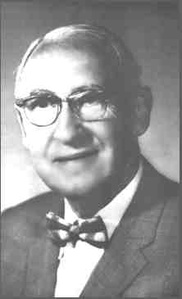 Stanley Hiller, Sr.Stanley Van Winkle Hiller (September 30, 1888 – August 8, 1968) was an inventor, land developer and aviator. 1 He is the namesake of Hiller Highlands.
Stanley Hiller, Sr.Stanley Van Winkle Hiller (September 30, 1888 – August 8, 1968) was an inventor, land developer and aviator. 1 He is the namesake of Hiller Highlands.
While a student, Hiller worked in the summers near Mount Shasta, bottling mineral water.
Hiller was a manufacturer of machinery and plants for processing food by-products, including the first seagoing fish-processing plants in 1927. From 1935–38 Hiller worked as a commercial fisheries lobbyist. 2
Always an entrepreneur, his first profitable venture occurred during the Great Depression. Fruit canneries produced mountains of peach and apricot pits which needed disposal after the fruit was canned. The canneries agreed to let Hiller have their fruit pits (they may have even paid him for their removal) and he found new uses for them. The cosmetics industry at that time required large amounts of ‘almond paste’ which Hiller supplied by crushing the fruit pits and removing their almond-like centers. Cosmetic giant Helena Rubinstein was one of Hiller’s main customers.
Going into WWII, Hiller had mountains of fruit pits. The war coincided with the evolution of electronics, with radio tubes, diodes, pentodes, klystron tubes and such needing high-grade carbon filaments. Hiller’s roasted fruit-pit shells produced the best grade carbon for the electronics. To keep up with the demand, Hiller invented a very long steel pipe revolving over gas burners in which fruit pits entered one end of the pipe and high-grade carbon came out the other. 5
In Alameda in the 1920s, Hiller co-designed and invented a seaplane. A plaque in the Smithsonian Aerospace Museum commemorates Hiller’s invention. 5 His other inventions included a new type of die-casting.
As a real-estate developer (1930–1955), one of his most notable projects was the transformation of his backyard Oakland hillside in the 1950s into what is now known as Hiller Highlands. 2
He was married to Opal Perkins Hiller (February 9, 1895–December 7, 1965) and had two children, Patricia Hiller Chadwick and Stanley Van Winkle Hiller, Jr., the famous helicopter designer. 3
Stanley Hiller, Jr. invented the first practical coaxial helicopter in the backyard of the family home. 4
In his later years, Hiller collaborated with the fishing industry in the Philippines. One of Hiller’s final projects was an attempt to restore Florida waterways choked by water hyacinths. 5
Stanley Hiller died in Oakland on August 8, 1968, and was buried in Cypress Lawn Memorial Park in Colma, California. 4
 Stanley Hiller grave (Cypress Lawn Memorial Park)
Stanley Hiller grave (Cypress Lawn Memorial Park)



